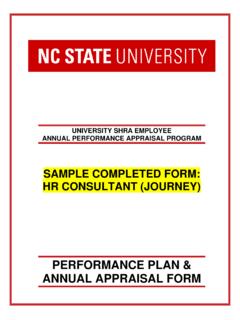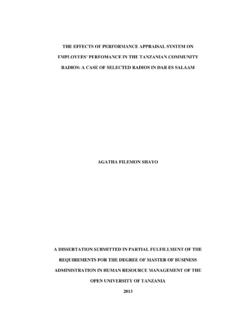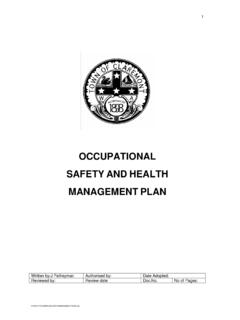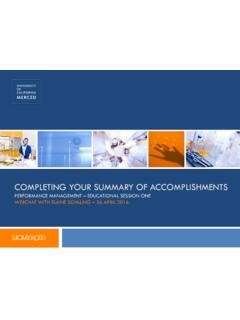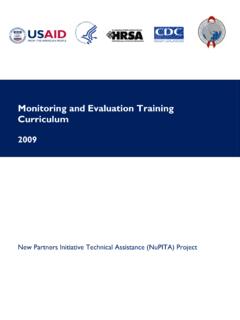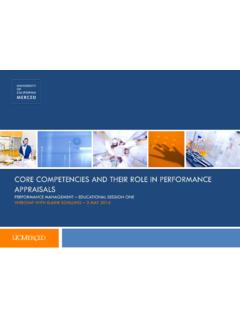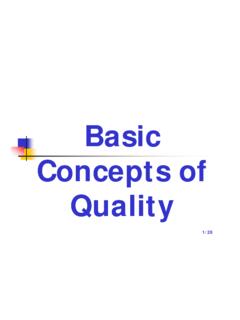Transcription of THE REFLECTIVE STUDENT LEARNING PORTFOLIO of ...
1 THE REFLECTIVE STUDENT LEARNING PORTFOLIO Department of Administration, Rehabilitation & Postsecondary Education A Requirement for the: Master of Arts Education with a Concentration in Educational Leadership and a Specialization in Postsecondary Education Master of Arts Education with a Concentration in Educational Leadership and a Specialization in STUDENT Affairs in Postsecondary Education Last Update: Fall 2011 [2] TABLE OF CONTENTS PAGE .. 3 PART 1: THE REFLECTIVE STUDENT LEARNING PORTFOLIO .. 4 Purpose of the PORTFOLIO .. 5 Goals of the PORTFOLIO Process .. 5 Contents of the PORTFOLIO .. 6 Required Artifacts to be Included in the PORTFOLIO .. 7 Pre Assessment of LEARNING .. 7 First Year LEARNING .. 8 Second Year LEARNING .. 10 Summary of LEARNING /Post Assessment .. 12 Organization of the PORTFOLIO .. 14 Disposition of the PORTFOLIO .. 15 PART 2: ORAL DEFENSE OF THE PORTFOLIO .
2 16 Formal Oral Presentation Procedures .. 16 The PORTFOLIO Review Committee .. 16 Students Responsibilities .. 16 .. 17 APPENDIX A: REFLECTIVE STUDENT LEARNING PORTFOLIO .. 18 APPENDIX B: Questions to Consider in Preparation for the Oral [3] THE REFLECTIVE LEARNING PORTFOLIO INTRODUCTION This document describes the important components of the REFLECTIVE LEARNING PORTFOLIO . The REFLECTIVE LEARNING PORTFOLIO is a degree requirement for all students in the Master of Arts Education with a Concentration in Educational Leadership and a Specialization in Postsecondary Education1 program and the Master of Arts Education with a Concentration in Educational Leadership and a Specialization in STUDENT Affairs in Postsecondary Education program2. The PORTFOLIO is part of the final appraisal of the candidate's completion of the graduate program, and the formal presentation of the PORTFOLIO is used to demonstrate the culminating LEARNING experience in the program. Students who choose to complete a REFLECTIVE LEARNING PORTFOLIO will not be required to do a written comprehensive exam or complete a research thesis.
3 Additionally, students, who have elected to do a written comprehensive exam or a research thesis are required to complete a REFLECTIVE LEARNING PORTFOLIO requirement in accordance with program, but are not required to complete the formal presentation. This handbook contains two parts: Part 1 The REFLECTIVE LEARNING PORTFOLIO : a description of the PORTFOLIO and its evaluation Part 2 Formal oral presentation of the PORTFOLIO : identification of the procedures to be used for the formal oral presentation of the PORTFOLIO 1 Typically referred to as the PSE program 2 Typically referred to as the STUDENT Affairs program [4] PART 1: THE REFLECTIVE LEARNING PORTFOLIO Purpose of the PORTFOLIO The purpose of the PORTFOLIO is to demonstrate a REFLECTIVE record of professional growth over time. It is to showcase samples of "best work" at a given point in the STUDENT s academic career. It serves as a demonstration of attainment of course and program goals, desired outcomes, and advanced skills.
4 It is a celebration of efforts. Portfolios are intended to demonstrate a broad repertoire of candidate performance over time. They are intended to paint a rich, developmental view of the professional growth and accomplishments of a candidate. One purpose of using portfolios in the overall program appraisal process is that the PORTFOLIO process moves the individual to a professional level of personal responsibility. Candidates become adept at examining their own growth and communicating their thinking to others. Portfolios are intended to convey information not only on one's accomplishments, but also on developmental efforts, and areas in need of continued improvement. The PORTFOLIO prepares students for future job interviews or entrance interviews to graduate school, as the content and quality of all work in the PORTFOLIO are current, relevant, and ready to share while revealing a candidate's capability for job performance . The PORTFOLIO is a performance based component of candidate appraisal at the completion of the graduate program.
5 The PORTFOLIO focuses on the candidate s performance in the program, as well as the prerequisite knowledge with which the candidate entered. It provides a way for the candidate to document his/her LEARNING experiences and reflect upon professional growth. Each candidate is required to maintain a PORTFOLIO that will serve as a communication and assessment tool in conversations with the program faculty and with prospective employers and graduate schools. The PORTFOLIO process adopted by the ARPE department follows a model set forth in Zubizarreta s (2004) work. According to Zubizarreta, the LEARNING PORTFOLIO grounded in a process of reflection, evidence, and collaboration is a rich, flexible document that engages students in continuous, thoughtful analysis of their LEARNING . The PORTFOLIO may be paper, electronic, or another creative medium, but at its center, the power of writing and reflection combine in the PORTFOLIO with purposeful, selective collection and assessment of LEARNING endeavors, and outcomes to improve LEARNING .
6 More specifically, the LEARNING PORTFOLIO (1) provides direct evidence of the quality of a STUDENT 's work and a basis for evaluation of work in progress, (2) defines assessment as a process, rather than necessarily as "final"; it permits re evaluation by alternative evaluators, at different times and in different contexts (different from providing [5] final quantitative grades), and (3) empowers the STUDENT to self assess and continuously expand or otherwise improve her/his work (University of Washington, 2003, 2). Further, the PORTFOLIO process allows the STUDENT to highlight their developmental LEARNING abilities by, (1) demonstrating their mastery of the program LEARNING outcomes or major points of the program, (2) providing evidence of how the work on an assignment evolved (3) choosing which artifacts ( , assignments, projects, works samples, reflection of internship experiences, etc.) best represent their LEARNING in and outside the classroom (4) choosing artifacts that show improvement in their competencies and abilities throughout their enrollment in the program, (5) linking theories with applied LEARNING experiences (6) self analyzing and reflecting on their own LEARNING , (7) using a wide range of digital and multimedia technologies to demonstrate technical competency, design, and presentation skills, (8) being more proactive in planning and pursuing their educational and post graduate opportunities; and (9) demonstrating their competencies and capabilities as they pursue career choices (University of Washington, 2003, 3).
7 Originally, the sole purpose of the REFLECTIVE LEARNING PORTFOLIO for this program was to demonstrate the educational journey of the STUDENT . While this reason still holds true for this PORTFOLIO process, changes to federal policy and the zeitgeist of higher education have resulted in the PORTFOLIO s movement towards demonstration of the value added by the educational degree at San Diego State University. Goals of the PORTFOLIO Process When writing your REFLECTIVE LEARNING PORTFOLIO , a good place to begin is reflection upon the goals of the PORTFOLIO process, which are described in part below. Because the PORTFOLIO is a purposeful and self REFLECTIVE collection of a STUDENT s work generated during the process of completing graduate course work, each STUDENT s PORTFOLIO should: Serve as a translation of graduate STUDENT performance standards and LEARNING outcomes through the demonstration of authentic artifacts ( , examples that illustrate what the STUDENT has learned and can do).
8 Provide an integrated performance based picture of how well the candidate has performed throughout the program and how the candidate can communicate the results of LEARNING . Show the growth and LEARNING accomplished as demonstrated through the STUDENT 's early pieces of work and later pieces of work. Illustrate the STUDENT s ability to synthesize her/his LEARNING of theory and its application to practice over a period of time. [6] Contents of the PORTFOLIO Apart from the pre assessment and post assessment materials, your PORTFOLIO will consist of the following items for each course: (1) an artifact of LEARNING for the course (some work product that you believe best illustrates your LEARNING ), and (2) a reflection paper on the chosen artifact. Since the PORTFOLIO is a reflection of your LEARNING and performance , to some extent, the PORTFOLIO contents will be individualized to reflect the STUDENT s personalized LEARNING experience. Yet, since a sampling of portfolios will be used to evaluate program effectiveness, a format has been prescribed to ensure appropriate LEARNING artifacts are included, and therefore evaluated in order to inform program improvements.
9 Instructional seminars will be offered throughout your program to assist you with compiling your LEARNING PORTFOLIO . In some cases, these informational sessions may also be presented to you in group advising meetings. As mentioned, the PORTFOLIO may contain written products, photographs, videotapes, posters, and notes from a meeting. Generally, portfolios include both work in progress and best efforts. The PORTFOLIO must include a wide range of selected work artifacts over time that document the actual achievement of LEARNING outcomes. The artifacts you select are to be examples of "best" efforts. Here are some examples of what might be included as artifacts: Reports Products undertaken as part of course work, including internships and independent research Artifacts from your graduate assistantships Action research undertaken Documentation of presentations made Documentation of implementation of skills into work situations Products produced Published articles Computer software created Letters of commendation Pictures/art work Resume documenting committee assignments or new professional experience Personal reflection logs and journals Testimonials or evidence of your effectiveness from your constituents Outcomes based assessment reports from your projects Examples of professional growth endeavors (conference, workshop, or seminar participation)
10 Self assessment tests or exercises Conference proposals and presentations performance evaluations [7] Required Artifacts to be Included in the PORTFOLIO Although students experiences in the program differ greatly, the faculty require some consistency in artifact selection so that portfolios can be used to evaluate STUDENT LEARNING in the program. Candidates need to present their portfolios in a logical manner so that the LEARNING can be easily interpreted, not only by the program faculty but by the potential employer and/or graduate school admission committee. The following are required sections for the PORTFOLIO . Each section lists required documents or artifacts of LEARNING . Checklists for each section can be found on the program website. Pre Assessment of LEARNING The purpose of this section is to demonstrate what you knew prior to enrolling in this degree program. Within this section, you will illustrate your perception of the profession and your preparedness for the profession.
